
Ancient DNA Shows Neanderthals and Denisovans Descending from Noah in the Line Ham
Marshall Jordan • Jan. 31, 2024
The study presented here uses a reconstruction of a Y chromosome tree based on the biblical assumption that all humans have descended from Noah.

Feathered Turtles?
Matthew Cserhati • Sept. 27, 2023
Evolutionists assert that several dinosaur species had feathers, but what do the genes say?

Baraminic Analysis of Crocodylia Based on Mitochondrial DNA Similarity
Matthew Cserhati • May 31, 2023
Are all crocodilians part of the same created kind, or are there multiple crocodilian kinds?

The Absence of Universally Conserved Protein-Coding Genes
Change Laura Tan • April 20, 2022
This study challenges the popular view of genes diversification by gene duplication, mutation, and natural selection.
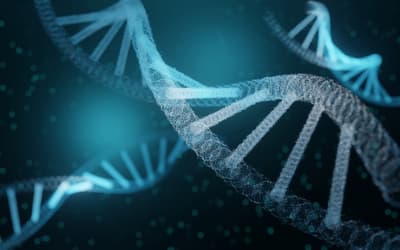
Facts Cannot Be Ignored When Considering the Origin of Life #2: Challenges in Generating the First Gene-encoding Template DNA or RNA
Change Laura Tan • March 23, 2022
This article argues that it is practically impossible to generate the first DNA (or RNA) template abiotically.

Facts Cannot be Ignored When Considering the Origin of Life #3: Necessity of Matching the Coding and the Decoding Systems
Change Laura Tan • March 23, 2022
DNA, however long it is and however many genes it can encode, is nothing without the molecular machineries to decode its encoded genes.

Facts Cannot Be Ignored When Considering the Origin of Life #1: The Necessity of Bio-monomers Not to Self-Link for the Existence of Living Organisms
Change Laura Tan • March 9, 2022
The required automatic self-linking of monomers for abiogenesis is incompatible with the genetic information coding and decoding system that is necessary for life.

The History of Using Radiation to Speed Up Evolution
Dr. Jerry Bergman • March 24, 2021
The history of the mutation theory as the foundation of the source of new genetic information is reviewed.

Theistic Evolution: A Response to Wayne Grudem, Making the Same Errors He Opposes in Others
Dr. Terry Mortenson • Feb. 17, 2021
Grudem is making the same biblical and theological errors that theistic evolutionists make. To be biblically consistent, he must abandon his old-earth position.

Gypsies Massacred as Part of the Darwinian Eugenic Holocaust
Dr. Jerry Bergman • Dec. 9, 2020
Attempts to apply Darwinian eugenics were part of the Nazi effort to produce a superior race in Germany.

Young-Earth Y Chromosome Clocks Confirm Known Post-Columbian Amerindian Population History and Suggest Pre-Columbian Population Replacement in the Americas
Dr. Nathaniel T. Jeanson • April 22, 2020
Recent human history represents a novel arena in which to comparatively test evolution and young-earth creation (YEC) against each other.

Testing the Predictions of the Young-Earth Y Chromosome Molecular Clock: Population Growth Curves Confirm the Recent Origin of Human Y Chromosome Differences
Dr. Nathaniel T. Jeanson • Dec. 4, 2019
The timescale for the human Y chromosome family tree has been a source of sharp disagreement within the creation/evolution debate.

Problems with the U-Pb Radioisotope Dating Methods—3. Mass Fractionation
Dr. Andrew A. Snelling • Nov. 13, 2019
The evidence for grossly accelerated radioisotope decay during a past cataclysmic event such as the Genesis Flood has been well established.

Responding to Lightner’s Comments on Natural Selection: Points of Agreement and Disagreement
Dr. Jason Lisle • Jan. 30, 2019
My paper was criticizing what Guliuzza has publicly written in which he denies the reality of natural selection: a claim that he has never publicly retracted.

Abortion: A Biblical, Biological, and Philosophical Refutation
Matt Dawson • Jan. 23, 2019
A holistic approach which accounts for biblical, biological, and philosophical truths must conclude that the unborn represent human beings with full personhood.
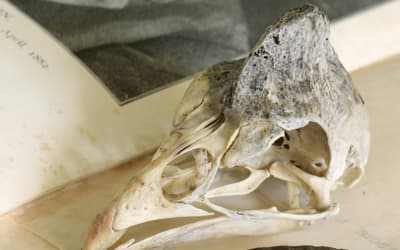
Refuting Dubious Claims Regarding Natural Selection
Dr. Jason Lisle • Dec. 5, 2018
Randy Guliuzza has made some controversial claims regarding the cause and nature of adaptation of organisms to their environment. We examine his claims.

Response to “Still No Replacement of Darwin: A Reply to Nathaniel Jeanson’s Response to My Review of Replacing Darwin—The New Origin of Species”
Dr. Nathaniel T. Jeanson • Nov. 21, 2018
Frello’s recent critique is helpful progress in our discussion, and it argues for the strength of the science in Replacing Darwin.

Still No Replacement of Darwin—A Reply to Nathanial Jeanson’s Response to my Review of Replacing Darwin—The New Origin of Species
Stefan Frello • Nov. 21, 2018
I used to think that when creationists talk about creation and evolution as a clash between worldviews, they were wrong. Jeanson has helped me change my mind.

Comparison of 18,000 De Novo Assembled Chimpanzee Contigs to the Human Genome Yields Average BLASTN Alignment Identities of 84%
Jeffrey P. Tomkins • Sept. 5, 2018
Results from this study negate the concept of the 98.5% DNA similarity myth and highlight the extremely flawed and humanized nature of the panTro4 version of the chimpanzee genome.

A Preliminary Cephalopod Baraminology Study Based on the Analysis of Mitochondrial Genomes and Morphological Characteristics
Jean O’Micks • Aug. 22, 2018
Cephalopods, including octopuses, squids, cuttlefish, and nautiluses, are underrepresented in both genome sequencing projects as well as baraminology studies.

Response to “No Replacement of Darwin: A Review of Replacing Darwin—The New Origin of Species”
Dr. Nathaniel T. Jeanson • April 25, 2018
Ironically, Frello has actually done me a great favor; his review ends up bolstering my original claims.

No Replacement of Darwin
Stefan Frello • April 25, 2018
Jeanson takes on a formidable task: To show that the theory of evolution is wrong, and to replace it with biblical creation. To make it short: Jeanson fails.

The Hermeneutics of Adam: A Figurative Approach to Genesis 1 and the Historicity of Adam1
Todd S. Beall • March 7, 2018
It is here argued that the best interpretation is that Adam and Eve are real, historical persons.

The Origin of Beauty: Contrasting the Handicap Hypothesis and Design Theory
David Woetzel • Dec. 13, 2017
Why should there be such “gratuitous beauty”? The plethora of extravagant biological characteristics prominently call out for an explanation.

Response to “Reply to ‘Response to ‘On the Creationist View on mtDNA’.”
Dr. Nathaniel T. Jeanson • Oct. 4, 2017
I am pleased to see that the young-earth creation (YEC) critic, Stefan Frello, seeks to continue our exchange of ideas.

Reply to “Response to ‘On the Creationist View on mtDNA’.”
Stefan Frello • Oct. 4, 2017
This is a short reply to Dr. Nathaniel Jeanson’s response to my comment to his work on human mtDNA.
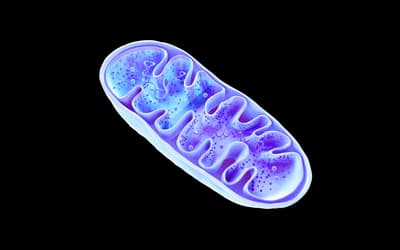
Response to “On the Creationist View on mtDNA”
Dr. Nathaniel T. Jeanson • Aug. 23, 2017
Frello criticizes papers that he hasn’t carefully read. Not surprisingly, his objections turn out to be unfounded.

On the Creationist View on mtDNA
Stefan Frello • Aug. 23, 2017
Dr. Nathaniel Jeanson claims to have documented a recent origin of humans, using mitochondrial DNA. A reader questions the results.

Debunking the Debunkers
Jeffrey P. Tomkins • Feb. 8, 2017
Taken together, genomic data for both the alleged fusion and cryptic centromere sites refute the concept of fusion in a human-chimpanzee common ancestor.

Analysis of 101 Chimpanzee Trace Read Data Sets: Assessment of Their Overall Similarity to Human and Possible Contamination With Human DNA
Jeffrey P. Tomkins • Nov. 16, 2016
The current chimpanzee genome assembly has problems that reduce its veracity as an authentic representation.

Beyond the DNA-Protein Paradox: A “Clutch” of Other Chicken-Egg Paradoxes in Cell and Molecular Biology
Derrick M. Glasco • Aug. 31, 2016
The DNA-protein paradox has long been a point of contention in the origin of life debate.

Big Gaps and Short Bridges: A Model for Solving the Discontinuity Problem
Change Laura Tan • July 6, 2016
This paper argues that the issue with the origin of life and the origin of biodiversity is not an issue of time, though deep time is problematical.

On the Origin of Human Mitochondrial DNA Differences, New Generation Time Data Both Suggest a Unified Young-Earth Creation Model and Challenge the Evolutionary Out-of-Africa Model
Dr. Nathaniel T. Jeanson • April 27, 2016
These results underscore the biblical model of human origins and simultaneously undercut the validity of the evolutionary out-of-Africa model.

On the Origin of Eukaryotic Species’ Genotypic and Phenotypic Diversity
Dr. Nathaniel T. Jeanson , et. al. • April 20, 2016
This study shows that created heterozygosity, together with natural processes that are observable, is sufficient to account for species’ diversity.

Using Taxonomically Restricted Essential Genes to Determine Whether Two Organisms Can Belong to the Same Family Tree
Change Laura Tan • Nov. 4, 2015
How are all life forms connected? Are they linked by one giant family tree, a web, or a forest of family trees?

Challenging the BioLogos Claim that a Vitellogenin (Egg-Laying) Pseudogene Exists in the Human Genome
Jeffrey P. Tomkins • Oct. 21, 2015
Interestingly, BioLogos is probably the only evolutionary group that puts such a high level of focus on this hypothesis as key evidence for evolution.

The Genesis and Emergence of Community-Associated Methicillin-Resistant Staphylococcus aureus (CA-MRSA): An Example of Evolution in Action?
Dr. Alan L. Gillen , et. al. • Oct. 14, 2015
We have seen a changing profile from HA-MRSA to CA-MRSA. This is potentially dangerous because the new strains are more virulent and aggressive.

Documented Anomaly in Recent Versions of the BLASTN Algorithm and a Complete Reanalysis of Chimpanzee and Human Genome-Wide DNA Similarity Using Nucmer and LASTZ
Jeffrey P. Tomkins • Oct. 7, 2015
Past evolutionary research in comparative DNA analysis between chimps and humans has employed a great deal of preferential and selective data analysis.

A Young-Earth Creation Human Mitochondrial DNA “Clock”: Whole Mitochondrial Genome Mutation Rate Confirms D-Loop Results
Dr. Nathaniel T. Jeanson • Sept. 23, 2015
New data agree with the expectations from D-loop results, further confirming the origin of humans within 6000 years and rejecting evolutionary timescales.

Is HIV-1 Losing Fitness Due to Genetic Entropy?
Yingguang Liu • July 1, 2015
HIV-1 is an important example which shows genetic entropy operating throughout the biological realm, even while meaningful genetic adaptations are occurring.

A Baraminic Study of the Blood Flukes of Family Schistosomatidae
Dr. Matthew E. Ingle , et. al. • June 24, 2015
This paper aims to determine the number of created kinds in this family of parasites, the original hosts, and what produced current species.

Mutations in the nef Gene make HIV-1 More Virulent
Yingguang Liu • June 17, 2015
Mutational degeneration of the nef gene manifests as increased pathogenicity of HIV-1.

Mitochondrial DNA Clocks Imply Linear Speciation Rates Within “Kinds”
Dr. Nathaniel T. Jeanson • June 3, 2015
The mechanism of speciation remains one of the most contested scientific questions among both evolutionists and creationists.

Cyclic Selection in HIV–1 Tropism: Microevolution That Is Going Nowhere
Yingguang Liu • April 29, 2015
The molecular interaction of HIV-1 is merely cyclic fine-tuning of an existing function and illustrates the broken relationship between the virus and the host.

Information Processing Differences Between Bacteria and Eukarya—Implications for the Myth of Eukaryogenesis
Change Laura Tan , et. al. • March 25, 2015
Based on differences in gene sets and molecular machines between bacteria and eukarya, we continue to demonstrate that unbridgeable evolutionary chasms exist.

Information Processing Differences Between Archaea and Eukarya—Implications for Homologs and the Myth of Eukaryogenesis
Change Laura Tan , et. al. • March 18, 2015
In the grand evolutionary paradigm, the origin of the eukaryotic cell represents one of the great mysteries and key hypothetical transitions of life.

Natural Selection: Assessing the Role It Plays in our World
Dr. Jean Lightner • March 4, 2015
Natural selection is controversial among many scientists, both in evolutionary and creationary circles.
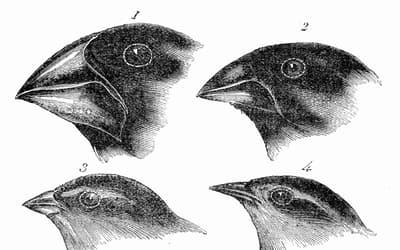
A Response to “Does Natural Selection Exist?”: Creatures’ Adaptation Explained by the Design-based, Organism-driven Approach: Part 3
Randy J. Guliuzza • Nov. 5, 2014
This third installment is a continuation of my response to a recent critical paper (Jeanson 2013).

Reply to “A Response to ‘Does Natural Selection Exist?’”
Dr. Nathaniel T. Jeanson • Nov. 5, 2014
In this three-part ~35,000-word response, Guliuzza (2014a, b, c) fails to clearly define his terms and/or use them consistently.

A Response to “Does Natural Selection Exist?”: Creatures’ Adaptation Explained by the Design-based, Organism-Driven Approach: Part 1
Randy J. Guliuzza • Oct. 29, 2014
This paper responds to a 2013 Jeanson paper critical of a series of Acts & Facts articles published by the Institute for Creation Research (ICR).

A Response to “Does Natural Selection Exist?”: Creatures’ Adaptation Explained by the Design-based, Organism-driven Approach: Part 2
Randy J. Guliuzza • Oct. 29, 2014
This second installment is a continuation of my response to a recent critical paper (Jeanson 2013) on a series of Acts & Facts articles.

The Human GULO Pseudogene—Evidence for Evolutionary Discontinuity and Genetic Entropy
Jeffrey P. Tomkins • April 2, 2014
Modern genomics provides the ability to screen the DNA of a wide variety of organisms to scrutinize broken metabolic pathways. This data has revealed wide-spread genetic entropy in human genomes.

Recent, Functionally Diverse Origin for Mitochondrial Genes from ~2700 Metazoan Species
Dr. Nathaniel T. Jeanson • Dec. 11, 2013
The young-earth creation model currently lacks a robust explanation for molecular diversity.

An Initial Estimate of Avian Ark Kinds
Dr. Jean Lightner • Nov. 27, 2013
This paper will focus on identifying extant bird kinds.
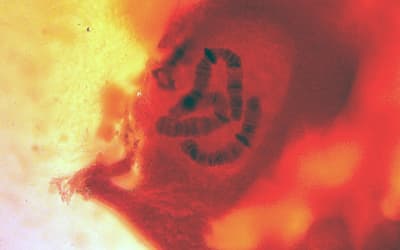
Alleged Human Chromosome 2 “Fusion Site” Encodes an Active DNA Binding Domain Inside a Complex and Highly Expressed Gene—Negating Fusion
Jeffrey P. Tomkins • Oct. 16, 2013
A major argument supposedly supporting human evolution from a common ancestor with chimpanzees is the “chromosome 2 fusion model.”

Chimeras, Cybrids, and Hybrids: A Christian’s Observations and Critique of Some Aspects of the Controversy Involving the Mixing of Human and Animal Materials for Scientific Research
Callie Joubert • Sept. 18, 2013
On July 22, 2011, some readers of the Daily Mail UK were stunned by news that “Scientists have created more than 150 human-animal embryos in British laboratories.”

The Human Beta-Globin Pseudogene Is Non-Variable and Functional
Jeffrey P. Tomkins • Aug. 21, 2013
The HBBP1 gene appears to be a highly functional and cleverly integrated feature of the human genome that is intolerant of mutation.

Does Natural Selection Exist?
Dr. Nathaniel T. Jeanson • Aug. 7, 2013
How did the modern diversity of life arise from the created kinds of Genesis 1 and from the kinds taken on board the Ark? Did natural selection play a role?

The Importance of an Historical Adam
Simon Turpin • May 29, 2013
In secular culture it is common to view the biblical history of Adam as a story, myth, or a parable but this is now also becoming the standard interpretation for many within the evangelical community.

German and American Eugenics in the Pre-World War 1 Era
Danae Mcgregor • March 6, 2013
Before the traumatic devastation of the Nazi genocides, eugenics theory was widely accepted by both German and American scientists, especially in the pre-World War 1 era.

Comprehensive Analysis of Chimpanzee and Human Chromosomes Reveals Average DNA Similarity of 70%
Jeffrey P. Tomkins • Feb. 20, 2013
A common evolutionary claim is that the DNA of chimpanzees and humans are nearly identical. Modern DNA research is showing much higher levels of discontinuity.

Evolutionary Psychology: Why It Fails as a Science and Is Dangerous
Callie Joubert • Dec. 19, 2012
Christians and the public at large cannot afford to accept what they are being told about themselves from the perspective of evolutionary psychology.
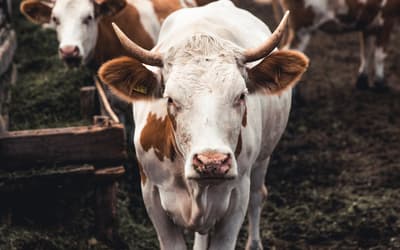
Mammalian Ark Kinds
Dr. Jean Lightner • Oct. 31, 2012
Information on the class Mammalia was evaluated in an attempt to get a realistic estimate of what mammalian kinds would have been represented on the Ark.

An Evaluation of the Myth That “Nothing in Biology Makes Sense Except in the Light of Evolution”
Dr. Jerry Bergman • Feb. 8, 2012
I reviewed both the textbooks used for life science classes at the college where I teach and those that I used in my past university course work.

Genome-Wide DNA Alignment Similarity (Identity) for 40,000 Chimpanzee DNA Sequences Queried against the Human Genome is 86–89%
Jeffrey P. Tomkins • Dec. 28, 2011
To provide a global set of analyses, large-scale comparative DNA sequence alignments between the chimpanzee and human genomes were performed with the BLASTN algorithm.

Determining the Ark Kinds
Dr. Jean Lightner , et. al. • Aug. 1, 2014
This research effort provides information necessary for the best possible reconstruction of the animal kinds preserved on the Ark for the Ark Encounter.

Response to Comments on “How Genomes are Sequenced and Why it Matters: Implications for Studies in Comparative Genomics of Humans and Chimpanzees”
Jeffrey P. Tomkins • Sept. 14, 2011
The author believes that his use of the Y-chromosome comparison example was misinterpreted and desires to clarify.

Created Kinds and Essential Natures: A Biblical and Philosophical Response to Evolutionists
Callie Joubert • July 27, 2011
Assuming that “natural kind” is a merely biological rather than metaphysical would be a mistake, resulting in Christians having difficulty evaluating and correcting rival views to created kinds.
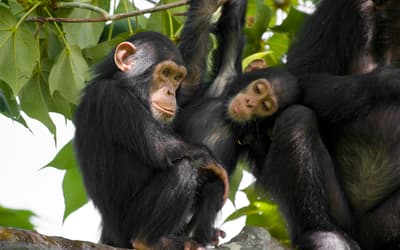
How Genomes are Sequenced and Why it Matters: Implications for Studies in Comparative Genomics of Humans and Chimpanzees
Jeffrey P. Tomkins • June 22, 2011
When evaluating comparisons between genomes using DNA sequence, it is important to understand the nature of how that sequence was obtained and bioinformatically manipulated before drawing conclusions.

Toward an Accurate Model of Variation in DNA
Mitchel Soltys • March 2, 2011
The Bible’s description of created kinds implies an information model which uses variables. The findings in this paper show that a model which uses variables forms a basis for understanding biology.

Baraminological Analysis Places Homo habilis, Homo rudolfensis, and Australopithecus sediba in the Human Holobaramin
Todd Charles Wood • May 5, 2010
This present study should end charges against creationists that classification of australopiths as human or ape is arbitrary and meaningless.

Those Enigmatic Neanderthals
Anne Habermehl • Jan. 13, 2010
Young-earth creationists rightly consider that Neanderthals were human, but are divided on various issues.

Systematic Theology Texts and the Age of the Earth
Dr. Terry Mortenson • Dec. 16, 2009
In the past few decades there has been a growing controversy in society and in the Church over evolution and the age of the earth.

Towards a Creationary Classification of Mutations
Jonathan Bartlett • Dec. 2, 2009
Mutations are normally classified according to their proximal effect on an organism’s fitness, whether beneficial, deleterious, or neutral.

The Role of Genomic Islands, Mutation, and Displacement in the Origin of Bacterial Pathogenicity
Dr. Georgia Purdom • Oct. 28, 2009
Bacteria are mostly beneficial, even though a minority are known as pathogens. They are necessary for natural processes such as human digestion and biogeochemical cycling.

Fungi from the Biblical Perspective
Ira Loucks • Oct. 21, 2009
Fungi are intriguing organisms with a wealth of diversity in their morphology and ecology. Determining the fundamentals of their biology from a biblical perspective is a daunting but achievable task.

A Review of Mitoribosome Structure and Function Does not Support the Serial Endosymbiotic Theory
Daniel Criswell • Oct. 7, 2009
It is apparent from the knowledge gained about mitochondria ribosome structure and function since the proposal of the Serial Endosymbiosis Theory that prokaryotes are not the ancestors of eukaryotes.

The Natural History of Retroviruses
Yingguang Liu , et. al. • Sept. 30, 2009
Evolutionists assume that all endogenous retroviruses are remnants of germ line infection by exogenous retroviruses.

Genetics of Coat Color II
Dr. Jean Lightner • June 10, 2009
Recognizing the population bottleneck which occurred in land animals at the time of the Flood, it is clear that genetic variation was once more limited than it is today.

Toward An Understanding of Arbuscular Mycorrhizal Fungi
Tom Hennigan • Feb. 18, 2009
As we seek to discover the intent of the Designer, we can enhance our stewardship of the land by using this symbiosis to re-establish polluted and disturbed landscapes and grow sustainable crops.

Bacterial Attenuation and its Link to Innate Oncolytic Potential
Luke Kim • Oct. 15, 2008
Although bacteria have been mainly recognized as disease causing agents, there are abundant scientific evidences that bacterial pathogenicity is not the major biological function of bacteria.

Genetics of Coat Color I
Dr. Jean Lightner • Oct. 8, 2008
Given the number of alleles within baramins, much of the diversity at this locus must have developed since the genetic bottleneck at the Flood where only a single breeding pair was preserved.

Karyotype Variability within the Cattle Monobaramin
Dr. Jean Lightner • June 11, 2008
Chromosomal rearrangements, particularly centric fusions, have played an important role in developing the chromosomal patterns that are seen in cattle today.

An Apology and Unification Theory for the Reconciliation of Physical Matter and Metaphysical Cognizance
Desmond Allen • Feb. 27, 2008
Because one is tangible and the other intangible, the physical and metaphysical are generally treated separately. But this dichotomy is illogical.

Microbes and the Days of Creation
Dr. Alan L. Gillen • Jan. 16, 2008
The world of germs and microbes has received much attention in recent years. But where do microbes fit into the creation account?
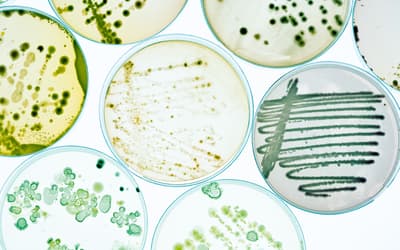
Proceedings of the Microbe Forum, June 2007
Dr. Joe Francis , et. al. • Jan. 9, 2008
For many years the roles of microbes as part of God’s wonderful design have been neglected. Perhaps it is because many people associate microbes as the cause of death, disease, and suffering.
